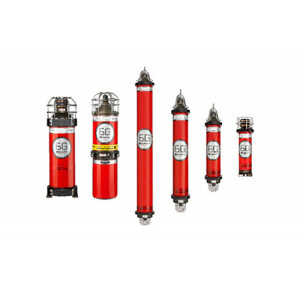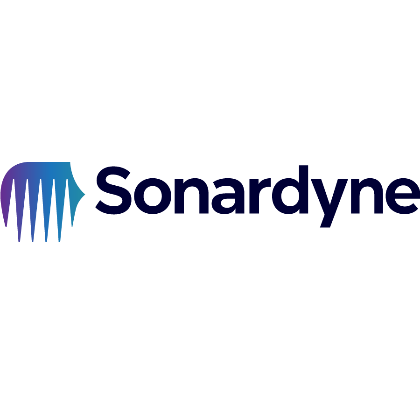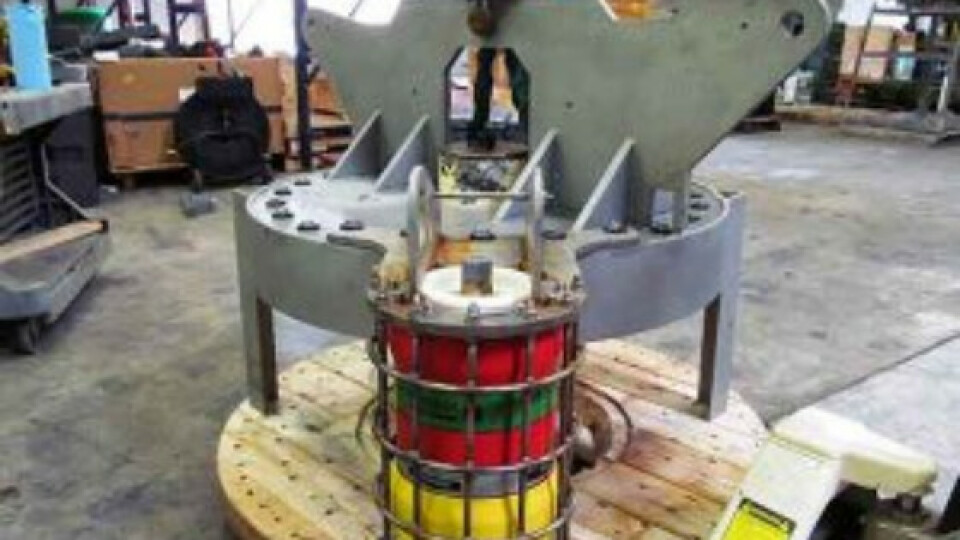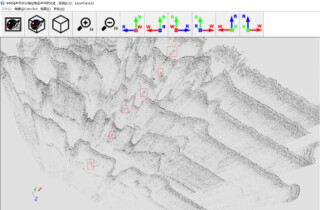
Acoustic 6G Modems Make the Connection Between Data and Decisions
Metocean organisation RPS Evans Hamilton Inc. design, install and maintain real-time environmental monitoring systems for drilling and production platforms worldwide. Two years ago Shell Exploration and Production (Shell E&P) approached them to expand the capabilities of their service to measure seabed current profile data at the Walker Ridge area in the Gulf of Mexico, and wirelessly transmit the observations to the surface for instant analysis. Jeff Morin, Senior Scientist with RPS Ocean Science (formerly Evans Hamilton Inc.), writes about how 6G modems met the brief.
Operations in deep and ultra-deep water (6,000 to 10,000 feet) have created challenges in terms of drilling, construction and pipeline installation but these challenges can be made safer and more efficient through a good understanding of subsurface current patterns.

Upward facing 6G modem and ADCP
This type of data has largely been obtained using Acoustic Doppler Current Profilers (ADCPs) mounted near the surface looking down through the water column. However as operational depths increase, a single ADCP may not provide enough coverage, which is where a second ADCP, placed on the seabed looking-up, provides the necessary data in-fill.
The simple and typical approach has been to deploy the second ADCP for several months at a time, set to log bottom currents at intervals from minutes to hours. However, while this data is extremely useful for site surveys and planning exploration activities, the delay between collection, instrument recovery, download and analysis, has meant that its usefulness in supporting on-site decision making during operations (including complying with government directives), is limited.
ACOUSTIC MODEM DATA ON DEMAND
An acoustic modem directly connected to the ADCP provides a cost-effective and increasingly popular option for users needing instant access to their data from wherever they are in the world. But as not all acoustic modems are made equal, it’s vital to make sure when choosing one for use in an application such as offshore drilling, it has the signal processing and error correction techniques required to reliably deliver critical data payloads over long distances and potentially, through acoustically hostile transmission paths.
When RPS Ocean Science was approached by Shell E&P with a requirement to display water velocity and direction profiles from an upward-looking ADCP deployed at one of their sites in the Gulf of Mexico, we identified Sonardyne’s 6G (sixth generation) wireless communications platform as the optimum solution. 6G has an enviable reputation across the region and today remains the only acoustic technology to have been proven as a successful monitoring solution during a well containment situation.
Dr. Pak Leung with Shell E&P’s Metocean team recognises the challenges in operation ready data collection in these ultra-deep environments, along with the complications of delivering the data to surface systems through a water column with unpredictable acoustic energy backgrounds. Dr. Leung determined the sample collection criteria and was the ultimate end user for operations advisories for the exploration effort. The data has been utilised by the metocean team to support exploration operations in daily advisories as well as providing a unique perspective on potential Topographic Rossby Waves thought to be a common feature in the area.
SEABED TO SURFACE WITH 6G ACOUSTIC MODEMS
The seabed component of the monitoring system incorporated a Sonardyne Compatt 6telemetry transponder interfaced with a Teledyne RDI Workhorse 300 kHz ADCP, mounted together in a deployment frame. 10,000 feet above, a Sonardyne HPT modem deployed from the rig acted as the surface receiver. It was enclosed within a rugged cage to protect it during deployment and recovery phases, and weighted to prevent drifting in high surface currents. The HPT was integrated with the data collection system we had previously supplied to the rig which included a 38 kHz ADCP at the surface and load handling system.
RESULTS
The Compatt 6G modems and ADCP were deployed by ROV on the seabed at a depth of 9,970 feet, approximately 150 feet away from the rig’s BOP.
After establishing reliable seabed to surface communications, data collection was initiated. The acquisition system is designed to receive and display data from the surface and bottom ADCPs at 10 minute intervals.
Water velocity profiles were generated from approximately three metres to 100 metres off the seabed. The profiles were composed of 50, two metre bins. Data was averaged over 75 seconds at a 1 Hz sample rate. Velocity and direction profiles were processed by the subsurface instrument and transmitted to the rig’s data acquisition system where profiles were displayed, along with the velocity and direction profiles from the surface ADCP, on the platform bridge. Processed data files were also transmitted to our client’s shore-based server and the National Data Buoy Center (NDBC) in near real-time.
Following initial system deployment, the signal analysis tools built into the Compatt 6 and HPT enabled the bidirectional communications link to be optimised for the local conditions, resulting in data return rates which were shown to be highly reliable with low latency.
A demonstration of the system’s capability took place during the summer of 2015, and since then, the RPS-Sonardyne solution has proven to offer reliable self-contained operation with long service intervals. The configuration of upward looking ADCP and Sonardyne 6G digital modem technology perfectly complements conventional near-surface and mid-column current monitoring and contributes toward lowering operational risk and increasing the safety of drilling, survey and ROV operations in deep water.

Related products







![3月21日-封面[1].jpg](https://cdn.geo-matching.com/voeE1ywo.jpg?w=320&s=6b3b1a0215d770f8797653e9202a8f52)







